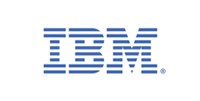
Prepare for a rewarding career in IT with IBM's Core 1: Hardware and Network Troubleshooting course. Gain the necessary skills and knowledge to set up, configure, and troubleshoot devices, networks, and systems in today's fast-paced world.
Read more
Prepare for a rewarding career in IT with IBM's Core 1: Hardware and Network Troubleshooting course. Gain the necessary skills and knowledge to set up, configure, and troubleshoot devices, networks, and systems in today's fast-paced world.
Prepare for a rewarding career in IT with IBM's Core 1: Hardware and Network Troubleshooting course. Gain the necessary skills and knowledge to set up, configure, and troubleshoot devices, networks, and systems in today's fast-paced world.
You will gain a solid understanding of hardware and networking concepts, including troubleshooting techniques for laptops, mobile devices, and video and resolution issues. You will also learn to identify and troubleshoot storage and printer issues, configure BIOS settings, and summarize power supply basics. Our comprehensive curriculum covers hardware and network troubleshooting, laptop and printer components and settings, motherboard, and storage components.
Whether you're starting your career in IT or seeking to advance in your current role, this course provides the knowledge and skills necessary to succeed in today's tech-driven world. In addition, this course is part of a series of courses designed to help you prepare for CompTIA A+ Certification and lays the foundation for advanced training in Core 1.
Join us today on your journey toward becoming a highly sought-after IT professional!
What's inside
Syllabus
Laptops and Other Mobile Devices
In this module, you will learn the foundations of troubleshooting laptops and other mobile devices. Lesson 1 introduces you to basic laptop components and how to identify, install, and configure them. You will also learn about storage drives, backlights, displays, digitizers, and Bluetooth and Wi-Fi accessories. In Lesson 2, you will learn how to resolve common issues with laptops and other mobile devices. The lesson will teach you how to resolve issues with laptop batteries, screen resolution and refresh rate, and Wi-Fi connections. Lastly, you will learn how to identify and troubleshoot video and resolution issues.
Read more
Syllabus
Good to know
Save this course
Activities
Organize and review course materials
Show steps
Organize and review your notes, assignments, quizzes, and exams from the course to reinforce your understanding of the concepts and improve your retention of the material.
Show steps
-
Gather all course materials, including notes, assignments, quizzes, and exams.
-
Organize the materials into a logical order or structure.
-
Review the materials regularly to refresh your memory and consolidate your learning.
Review networking fundamentals
Show steps
Review the basics of networking, including IP addressing, subnetting, and network protocols, to strengthen your understanding of the course material.
Browse courses on
Networking Fundamentals
Show steps
-
Read through your notes or textbooks on networking fundamentals.
-
Take practice quizzes or mock exams covering networking concepts.
Hardware Troubleshooting Discussion Group
Show steps
Share knowledge and learn from peers by engaging in discussions about hardware troubleshooting.
Browse courses on
Hardware Troubleshooting
Show steps
-
Join or create a discussion group.
-
Participate in discussions and share your experiences.
-
Ask questions and seek advice from other members.
-
Collaborate on troubleshooting scenarios.
Seven other activities
Expand to see all activities and additional details
Show all ten activities
Lab Troubleshooting Simulation
Show steps
Practice identifying and resolving common hardware issues through simulated lab scenarios.
Browse courses on
Troubleshooting Techniques
Show steps
-
Access the online simulation platform.
-
Select a hardware troubleshooting scenario.
-
Follow the instructions to diagnose and resolve the issue.
-
Review the results and identify areas for improvement.
Home Network Setup and Troubleshooting Project
Show steps
Deepen understanding of networking principles by setting up a home network and troubleshooting potential issues.
Show steps
-
Gather necessary materials (router, cables, devices).
-
Configure the router and connect devices to the network.
-
Identify and resolve any connectivity or performance issues.
-
Document the process and findings.
Junior IT Support Mentoring Program
Show steps
Reinforce knowledge and develop leadership skills by mentoring junior IT support staff in hardware and network troubleshooting.
Browse courses on
Mentorship
Show steps
-
Identify junior staff seeking mentorship.
-
Establish regular meetings or communication channels.
-
Provide guidance on troubleshooting methodologies and best practices.
-
Review and assess troubleshooting cases.
Advanced Networking and Troubleshooting Tutorials
Show steps
Expand knowledge of networking concepts and troubleshooting beyond the course curriculum through online tutorials.
Browse courses on
Network Troubleshooting
Show steps
-
Identify reputable online resources and tutorials.
-
Select tutorials that cover advanced networking topics.
-
Follow the tutorials and complete any hands-on exercises.
-
Review and apply the concepts learned in the tutorials.
Hardware Troubleshooting Guide
Show steps
Solidify troubleshooting knowledge by creating a comprehensive guide covering common hardware issues and resolution steps.
Browse courses on
Troubleshooting Techniques
Show steps
-
Research and gather information on hardware troubleshooting.
-
Organize the information into a clear and logical structure.
-
Use diagrams, images, and examples to illustrate concepts.
-
Review and edit the guide for clarity and accuracy.
Contribute to Open Source Troubleshooting Tools
Show steps
Gain practical experience and contribute to the troubleshooting community by participating in open source projects.
Browse courses on
Open Source
Show steps
-
Identify open source troubleshooting tools and projects.
-
Review the codebase and documentation.
-
Identify areas where you can make contributions (e.g., bug fixes, feature enhancements).
-
Submit your contributions and engage with the community.
Create a troubleshooting guide for hardware components
Show steps
Develop a comprehensive troubleshooting guide that covers common hardware component issues and provides step-by-step instructions on how to resolve them, thereby solidifying your understanding and problem-solving skills.
Browse courses on
Hardware Troubleshooting
Show steps
-
Identify common hardware components and their potential issues.
-
Research and gather information on troubleshooting techniques.
-
Organize and write the troubleshooting guide in a clear and concise manner.
Organize and review course materials
Show steps
Organize and review your notes, assignments, quizzes, and exams from the course to reinforce your understanding of the concepts and improve your retention of the material.
Show steps
- Gather all course materials, including notes, assignments, quizzes, and exams.
- Organize the materials into a logical order or structure.
- Review the materials regularly to refresh your memory and consolidate your learning.
Review networking fundamentals
Show steps
Review the basics of networking, including IP addressing, subnetting, and network protocols, to strengthen your understanding of the course material.
Browse courses on
Networking Fundamentals
Show steps
- Read through your notes or textbooks on networking fundamentals.
- Take practice quizzes or mock exams covering networking concepts.
Hardware Troubleshooting Discussion Group
Show steps
Share knowledge and learn from peers by engaging in discussions about hardware troubleshooting.
Browse courses on
Hardware Troubleshooting
Show steps
- Join or create a discussion group.
- Participate in discussions and share your experiences.
- Ask questions and seek advice from other members.
- Collaborate on troubleshooting scenarios.
Lab Troubleshooting Simulation
Show steps
Practice identifying and resolving common hardware issues through simulated lab scenarios.
Browse courses on
Troubleshooting Techniques
Show steps
- Access the online simulation platform.
- Select a hardware troubleshooting scenario.
- Follow the instructions to diagnose and resolve the issue.
- Review the results and identify areas for improvement.
Home Network Setup and Troubleshooting Project
Show steps
Deepen understanding of networking principles by setting up a home network and troubleshooting potential issues.
Show steps
- Gather necessary materials (router, cables, devices).
- Configure the router and connect devices to the network.
- Identify and resolve any connectivity or performance issues.
- Document the process and findings.
Junior IT Support Mentoring Program
Show steps
Reinforce knowledge and develop leadership skills by mentoring junior IT support staff in hardware and network troubleshooting.
Browse courses on
Mentorship
Show steps
- Identify junior staff seeking mentorship.
- Establish regular meetings or communication channels.
- Provide guidance on troubleshooting methodologies and best practices.
- Review and assess troubleshooting cases.
Advanced Networking and Troubleshooting Tutorials
Show steps
Expand knowledge of networking concepts and troubleshooting beyond the course curriculum through online tutorials.
Browse courses on
Network Troubleshooting
Show steps
- Identify reputable online resources and tutorials.
- Select tutorials that cover advanced networking topics.
- Follow the tutorials and complete any hands-on exercises.
- Review and apply the concepts learned in the tutorials.
Hardware Troubleshooting Guide
Show steps
Solidify troubleshooting knowledge by creating a comprehensive guide covering common hardware issues and resolution steps.
Browse courses on
Troubleshooting Techniques
Show steps
- Research and gather information on hardware troubleshooting.
- Organize the information into a clear and logical structure.
- Use diagrams, images, and examples to illustrate concepts.
- Review and edit the guide for clarity and accuracy.
Contribute to Open Source Troubleshooting Tools
Show steps
Gain practical experience and contribute to the troubleshooting community by participating in open source projects.
Browse courses on
Open Source
Show steps
- Identify open source troubleshooting tools and projects.
- Review the codebase and documentation.
- Identify areas where you can make contributions (e.g., bug fixes, feature enhancements).
- Submit your contributions and engage with the community.
Create a troubleshooting guide for hardware components
Show steps
Develop a comprehensive troubleshooting guide that covers common hardware component issues and provides step-by-step instructions on how to resolve them, thereby solidifying your understanding and problem-solving skills.
Browse courses on
Hardware Troubleshooting
Show steps
- Identify common hardware components and their potential issues.
- Research and gather information on troubleshooting techniques.
- Organize and write the troubleshooting guide in a clear and concise manner.
Career center
Network Administrator
Computer Systems Analyst
IT Project Manager
IT Consultant
Information Security Manager
IT Auditor
Computer and Information Systems Manager
IT Security Analyst
IT Operations Manager
IT Manager
Computer Support Specialist
Software Engineer
Web Developer
Hardware Design Engineer
Database Administrator
Reading list
Share
Similar courses
OpenCourser helps millions of learners each year. People visit us to learn workspace skills, ace their exams, and nurture their curiosity.
Our extensive catalog contains over 50,000 courses and twice as many books. Browse by search, by topic, or even by career interests. We'll match you to the right resources quickly.
Find this site helpful? Tell a friend about us.
We're supported by our community of learners. When you purchase or subscribe to courses and programs or purchase books, we may earn a commission from our partners.
Your purchases help us maintain our catalog and keep our servers humming without ads.
Thank you for supporting OpenCourser.



